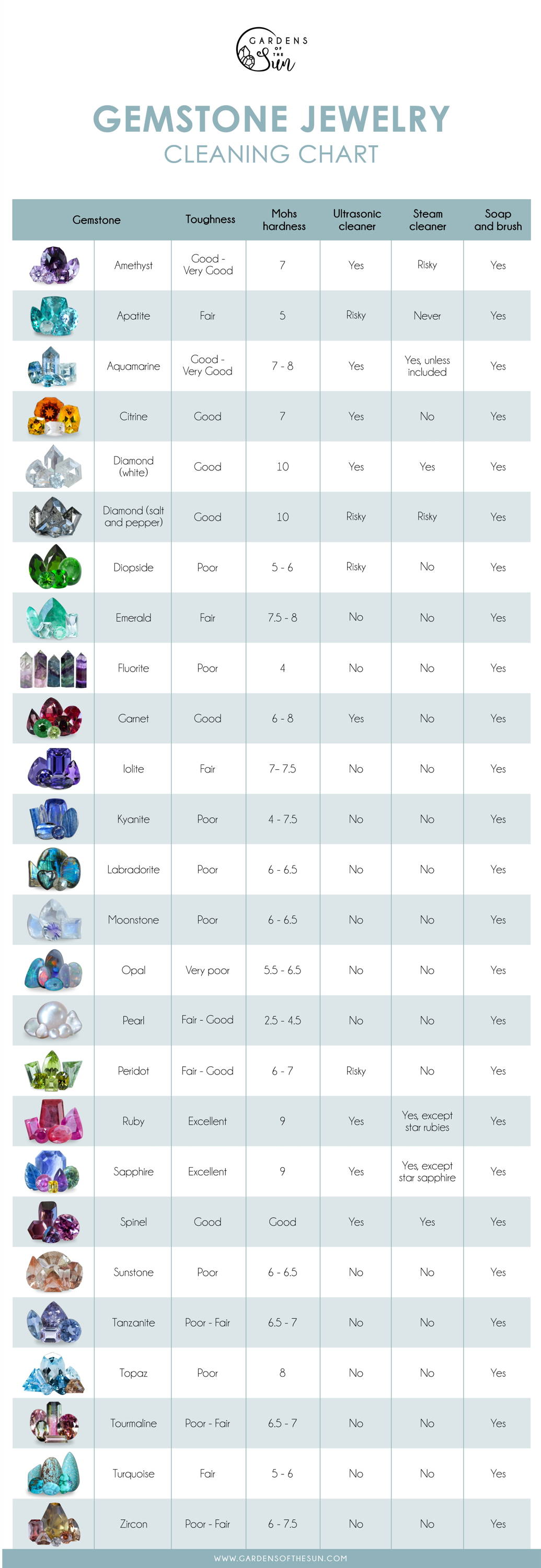Jewelry is precious. It needs care. Cleaning jewelry is important. But not all jewelry can be cleaned the same way. Ultrasonic cleaners are popular. They use sound waves to clean. But, some jewelry should not be cleaned in them. Let’s find out more.

Credit: gardensofthesun.com
Understanding Ultrasonic Cleaners
Ultrasonic cleaners use sound waves. These waves create tiny bubbles. The bubbles remove dirt. The process is called cavitation. It works well for many items. But, some items can get damaged.

Credit: diamondbuzz.blog
Jewelry to Avoid Cleaning in Ultrasonic Cleaners
Some jewelry is delicate. Some have special features. Let’s see which jewelry should stay away from ultrasonic cleaners.
Soft Gemstones
Soft gemstones can get damaged easily. They include:
- Opals
- Turquoise
- Emeralds
These stones can crack. They can lose their shine. Avoid using ultrasonic cleaners on them.
Organic Gemstones
Organic gemstones are made by nature. They are delicate. Examples are:
- Pearls
- Coral
- Amber
Pearls can lose their luster. Coral can break. Amber can get scratched. Do not use ultrasonic cleaners on these.
Porous Stones
Porous stones have tiny holes. They absorb liquids. Examples are:
- Malachite
- Lapis Lazuli
- Onyx
These stones can get damaged. They can change color. Avoid ultrasonic cleaners for them.
Heavily Included Stones
Some stones have many inclusions. Inclusions are tiny flaws. Examples are:
- Emeralds
- Rubies
These stones can crack. They can break. Do not use ultrasonic cleaners on them.
Heat Treated Stones
Some stones are heat treated. This improves their color. Examples are:
- Sapphires
- Topaz
Heat treated stones can get damaged. Avoid ultrasonic cleaners for them.
Jewelry With Glue
Some jewelry uses glue. This can be:
- Costume jewelry
- Jewelry with glued-in stones
The ultrasonic cleaner can weaken the glue. Stones can fall out. Do not use ultrasonic cleaners on these.
Antique Jewelry
Antique jewelry is old. It is often delicate. Examples are:
- Vintage brooches
- Old rings
Antique jewelry can get damaged. The metal can weaken. Avoid ultrasonic cleaners for antique jewelry.
Safe Cleaning Alternatives
So, what can you do? There are safe ways to clean jewelry. Here are some tips.
Soft Cloth
Use a soft cloth. Gently wipe the jewelry. This works well for:
- Pearls
- Opals
- Amber
A soft cloth can remove dust. It keeps the jewelry shiny.
Warm Soapy Water
Use warm soapy water. Soak the jewelry for a few minutes. Then, use a soft brush. This is good for:
- Gold
- Silver
- Platinum
Rinse with clean water. Pat dry with a soft cloth.
Professional Cleaning
Take your jewelry to a professional. They have special tools. They know how to handle delicate items. This is best for:
- Antique jewelry
- Soft gemstones
- Heavily included stones
A professional can clean safely. They protect your precious pieces.
Frequently Asked Questions
What Types Of Jewelry Should Not Be Cleaned In An Ultrasonic Cleaner?
Delicate jewelry like pearls, opals, and emeralds should not be cleaned in an ultrasonic cleaner.
Can Ultrasonic Cleaners Damage Soft Gemstones?
Yes, soft gemstones like turquoise and coral can be damaged by ultrasonic cleaners.
Is It Safe To Clean Antique Jewelry In An Ultrasonic Cleaner?
No, ultrasonic cleaners can harm the delicate settings and materials of antique jewelry.
Are Glued Jewelry Pieces Safe In An Ultrasonic Cleaner?
No, glued jewelry pieces can come apart in an ultrasonic cleaner.
Conclusion
Ultrasonic cleaners are great. But, not for all jewelry. Soft gemstones, organic stones, and porous stones are delicate. Heavily included stones and heat treated stones need care. Jewelry with glue and antique pieces are fragile. Use safe cleaning methods. A soft cloth, warm soapy water, and professional cleaning are best. Keep your jewelry beautiful. Protect it with the right care.













